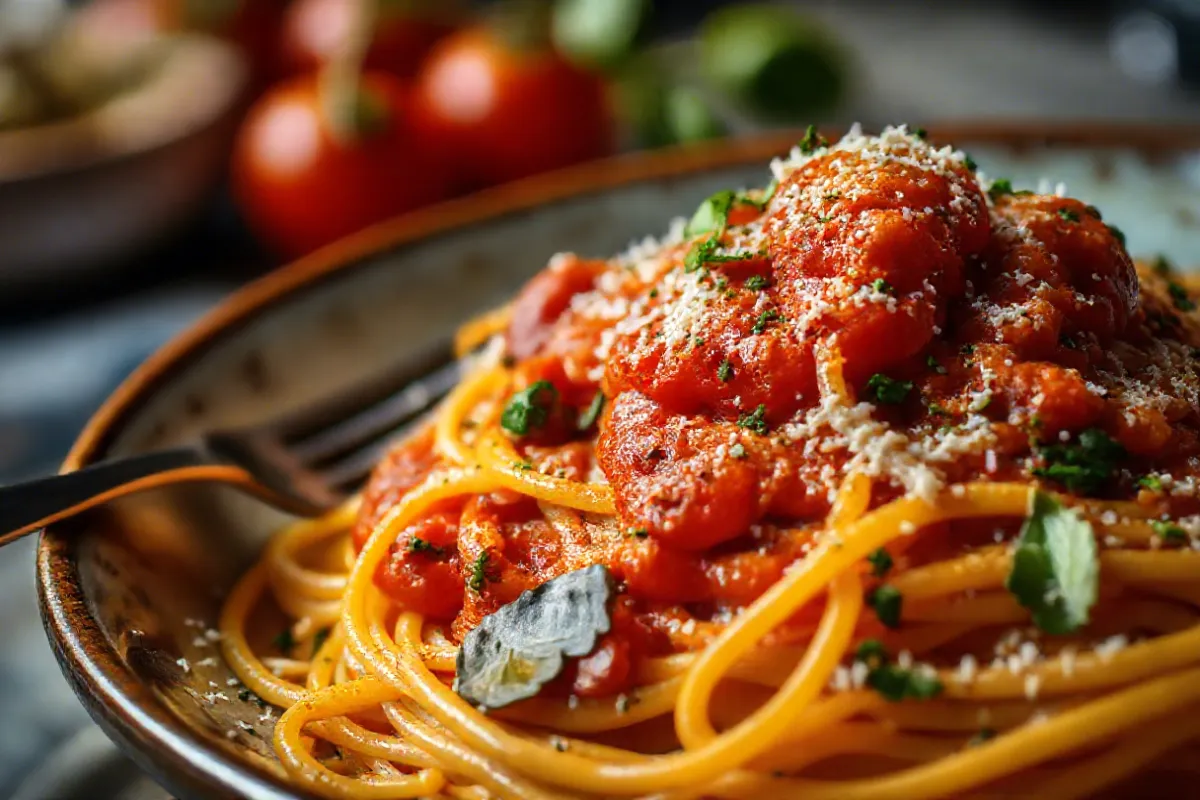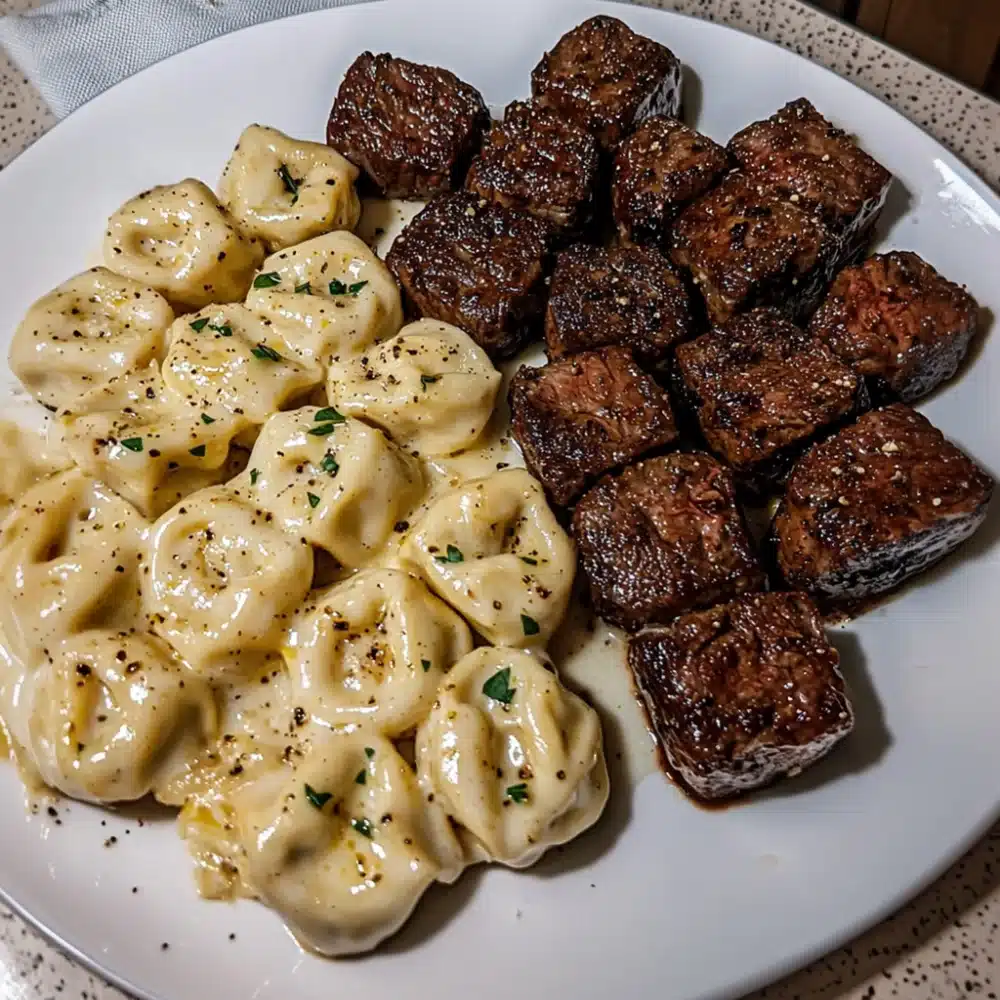Introduction
The demand for gluten-free products has skyrocketed in recent years, driven by increasing awareness of gluten intolerance and celiac disease. Among the many gluten-free alternatives available, gluten-free spaghetti has become a staple for those who need or choose to avoid gluten.
Whether you’re new to the gluten-free lifestyle or a seasoned pro, this guide will walk you through everything you need to know about gluten-free spaghetti, from its benefits to how to cook it perfectly.
What is Gluten-Free Spaghetti?
Gluten-free spaghetti is a pasta made from ingredients that do not contain gluten, a protein found in wheat, barley, and rye. Traditional spaghetti is made from wheat flour, but gluten-free varieties use alternative flour like rice, corn, quinoa, and chickpea. These flours provide the necessary structure to the pasta without triggering gluten-related health issues.
Here’s a closer look at some of the critical ingredients :
- Rice Flour: Known for its mild flavour and smooth texture.
- Corn Flour: Adds a slightly sweet flavour and yellow colour.
- Quinoa Flour: High in protein and offers a nutty taste.
- Chickpea Flour: Adds a boost of fibre and protein.
The main difference between gluten-free and regular spaghetti lies in the texture and taste. While some brands have perfected the texture to be almost identical to regular pasta, others may have a slightly different mouthfeel, often described as chewier or less elastic. However, the health benefits and the ability to enjoy a favourite dish without discomfort make it a worthwhile trade-off.
Health Benefits of Gluten-Free Spaghetti
For those with celiac disease or gluten intolerance, avoiding gluten is essential to maintain good health. Gluten-free spaghetti provides a safe alternative that doesn’t compromise taste or texture. Here are some of the essential health benefits:
- Relief from Symptoms: For those with celiac disease, consuming gluten can lead to severe gastrointestinal issues, fatigue, and nutrient deficiencies. Gluten-free pasta helps alleviate these symptoms by providing a safe food option.
- Better Digestive Health: Even for those without celiac disease, some people find that a gluten-free diet improves their digestive health, reducing bloating and gas.
- Nutrient-Rich Options: Many gluten-free pasta are made from nutrient-dense ingredients like quinoa and chickpeas, offering higher protein and fibre content than traditional pasta.
Compared to regular pasta, gluten-free varieties often have a different nutritional profile. For example, while regular pasta is rich in carbohydrates, gluten-free options made from quinoa or chickpeas can be higher in protein and fibre, making them a more balanced choice for those looking to maintain or improve their diet.
Types of Gluten-Free Spaghetti
The variety of gluten-free pasta available today means there is something for everyone, whether you’re looking for a familiar texture or willing to experiment with new flavours. Here’s a breakdown of the most common types of gluten-free spaghetti:
- Rice-Based Spaghetti: One of the most common types, rice-based pasta is known for its neutral flavour and smooth texture. It’s a great starting point for those new to gluten-free pasta.
- Corn-Based Spaghetti: Corn pasta has a slightly sweet flavour and a bright yellow colour, visually similar to traditional wheat pasta.
- Quinoa-Based Spaghetti: Rich in protein and fibre, quinoa pasta has a slightly nutty flavour and is a popular choice for those looking to add more nutrients to their diet.
- Chickpea-Based Spaghetti: Chickpea pasta is high in protein and fibre, offering a denser texture that holds up well in hearty dishes.
When choosing a gluten-free pasta, it’s essential to consider the flavour and the nutritional content to find the option that best suits your tastes and dietary needs.
How to Cook Gluten-Free Spaghetti
Cooking gluten-free spaghetti can be tricky compared to regular pasta. Still, with the proper technique, you can achieve perfect results every time. Follow these steps to cook your spaghetti to perfection:
- Use Plenty of Water: Gluten-free pasta can be sticky, so use a large pot with plenty of water to prevent clumping.
- Salt the Water: Adding salt to the water not only flavours the pasta but also helps to maintain its texture.
- Stir Frequently: Stir the pasta frequently during cooking to keep it from sticking together.
- Test for Doneness: Start testing the pasta a minute or two before the package instructions indicate. Gluten-free pasta can go from undercooked to overcooked quickly, so keep an eye on it.
- Rinse with Cold Water: Once the pasta is done, drain it and rinse with cold water to stop the cooking process and prevent sticking.
Common Mistakes to Avoid
- Overcooking: Gluten-free pasta can become mushy if overcooked, so oversee it.
- Undercooking: On the flip side, undercooked gluten-free pasta can be tricky and unappetizing.
- Not Stirring: Failing to stir the pasta regularly can make separating clumps challenging.
Popular Gluten-Free Spaghetti Recipes
One of the best things about gluten-free spaghetti is that it can be used in almost any pasta recipe. Whether craving a classic Italian dish or something more creative, gluten-free pasta is versatile and delicious. Here are some popular gluten-free spaghetti recipes to try:
- 1. Gluten-Free Spaghetti Carbonara : This classic Italian dish is made gluten-free with your favorite gluten-free spaghetti. The creamy sauce, made from eggs, cheese, pancetta, and black pepper, perfectly coats the pasta, offering a rich and indulgent meal without any gluten.
- 2. Gluten-Free Spaghetti Bolognese : A hearty and comforting dish, this recipe features a rich, slow-cooked meat sauce made with ground beef, tomatoes, onions, and herbs. The gluten-free pasta soaks up the savory flavors, making it a satisfying meal for the whole family.
- 3. Gluten-Free Spaghetti Aglio e Olio : A simple yet flavorful recipe, this version of Spaghetti Aglio e Olio combines gluten-free spaghetti with garlic, olive oil, and chili flakes. The dish is quick to prepare but packed with robust flavors, making it a favorite for busy weeknights.
- 4. Gluten-Free Spaghetti with Marinara Sauce : This classic recipe features a rich tomato sauce made with garlic, onions, tomatoes, and fresh herbs. The gluten-free pasta pairs perfectly with the tangy and slightly sweet sauce, creating a comforting and timeless meal.
- 5. Gluten-Free Spaghetti Primavera : This vibrant and veggie-packed gluten-free spaghetti primavera is a delicious way to enjoy seasonal vegetables. The gluten-free spaghetti is tossed with a medley of colorful vegetables and a light sauce, making it a fresh and healthy option for any time of year.
Each recipe showcases the versatility of gluten-free spaghetti and proves that you don’t need gluten to enjoy your favourite pasta dishes.
Enhancing the Flavor
To really make your gluten-free spaghetti shine, it’s all about the right seasonings and pairings. Here are some tips to enhance the flavor of your gluten-free pasta dishes:
- Use Fresh Herbs: Basil, oregano, and parsley are classic choices that add freshness and depth to your pasta.
- Add Garlic: Whether sautéed or roasted, garlic is a must-have in almost any pasta dish.
- Include Vegetables: Bell peppers, zucchini, and spinach not only add flavor but also increase the nutritional value of your meal.
For a richer flavor, consider adding a touch of parmesan cheese (or a dairy-free alternative) on top of your finished dish. The cheese will melt into the sauce, creating a creamy, indulgent texture that complements the gluten-free pasta perfectly.
FAQs
When exploring gluten-free pasta, you may have some questions. Here are answers to some common FAQs:
- Is gluten-free spaghetti healthier than regular spaghetti?
- It can be, depending on the ingredients used. For example, pasta made from quinoa or chickpeas can offer more protein and fiber than traditional wheat pasta.
- Is it possible to use gluten-free spaghetti in every spaghetti recipe?
- Yes! it can replace regular pasta in any recipe. Just be mindful of cooking times and textures.
- What is the best way to store gluten-free spaghetti?
- Store uncooked gluten-free pasta in a cool, dry place. Cooked pasta should be stored in an airtight container in the refrigerator and consumed within 3-5 days.
Expert Tips for Buying Gluten-Free Spaghetti
When shopping for gluten-free pasta, there are a few things to keep in mind to ensure you’re getting the best product:
- Check the Ingredients: Look for pasta made from high-quality, whole-grain flours like quinoa or brown rice. These options are not only gluten-free but also more nutritious.
- Read Reviews: Not all gluten-free pastas are created equal. Reading reviews can help you find brands that others have found to have the best taste and texture.
- Look for Certifications: If you have celiac disease or a severe gluten intolerance, look for pasta that is certified gluten-free to ensure there’s no cross-contamination.
Some of the best gluten-free pasta brands are recommended by chefs and nutritionists, offering both great taste and nutrition.
Conclusion
Gluten-free spaghetti offers a delicious and healthy alternative to traditional pasta, making it possible for everyone to enjoy their favorite dishes without the discomfort associated with gluten. Whether you’re following a gluten-free diet due to celiac disease, gluten intolerance, or personal choice, gluten-free pasta allows you to continue enjoying classic meals with ease. By following the tips and recipes outlined in this guide, you can make sure your gluten-free spaghetti dishes are always flavorful, satisfying, and perfectly cooked.
From understanding the different types of gluten-free pasta to mastering the cooking techniques, you now have all the knowledge you need to make the most out of your gluten-free pasta experience. So, grab a box of gluten-free spaghetti, and start cooking your way to delicious meals that everyone will love.






